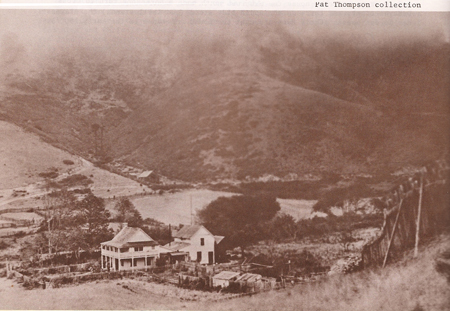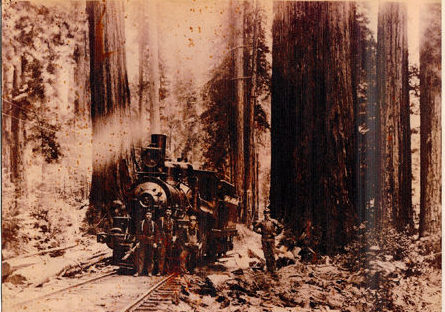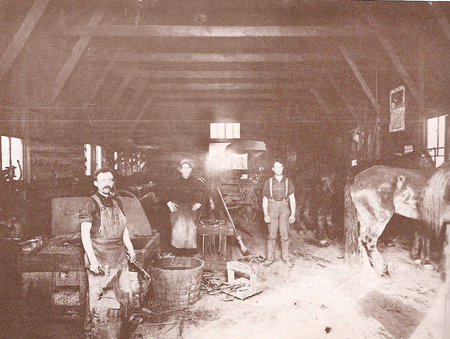HISTORY OF HOWARD CREEK RANCH



Alfred Howard married Missouri Lavina Cook and they had seven children, the first four dying before five years old. All were of course born at home. There is a gravestone in the family plot in Westport, where one of their young sons is buried and the gravestone quotes his last words “Look Ma, I can see the angels coming.” Definitely a tearful time. Despite all of the tragedies, their last three children survived and prospered.
 Lucy Howard, the eldest surviving daughter, wrote her name in her upstairs bedroom windowpane in the wave of the glass. She had become engaged to Edson McFaul, a neighbor boy from “Union Landing” down the road. The glass pane has survived over a hundred years and can still be seen in “Lucy’s Room”. However, her 2-year-old great great grandson did almost destroy it during a recent visit with his exuberant banging.
Lucy Howard, the eldest surviving daughter, wrote her name in her upstairs bedroom windowpane in the wave of the glass. She had become engaged to Edson McFaul, a neighbor boy from “Union Landing” down the road. The glass pane has survived over a hundred years and can still be seen in “Lucy’s Room”. However, her 2-year-old great great grandson did almost destroy it during a recent visit with his exuberant banging. In 1909 the Howard family sold to the Thompson family who were from Washington County, Maine. The Howard’s were buried in the Westport Cemetery. The Thompson’s were also industrious and added many more hundreds of acres to the ranch. They continued redwood milling with a bunkhouse in the canyon, which also contained a mill and various outbuildings and a narrow gauged train track that ran from the mill to the landing on the bluff with a spur through the old, enormous locomotive barn where the engine could run in for repairs.
In 1909 the Howard family sold to the Thompson family who were from Washington County, Maine. The Howard’s were buried in the Westport Cemetery. The Thompson’s were also industrious and added many more hundreds of acres to the ranch. They continued redwood milling with a bunkhouse in the canyon, which also contained a mill and various outbuildings and a narrow gauged train track that ran from the mill to the landing on the bluff with a spur through the old, enormous locomotive barn where the engine could run in for repairs. Ira’s brother Les had a blacksmith shop at Howard Creek starting in 1910 and that made the ranch almost self-sufficient. Ira Thompson was a true wheeler and dealer. He bought the old Gordon Place (now De Haven Valley Farm) and added that to his holdings which by then equaled around 2000 acres. The Thompson family held on to the land until 1971 when a large real estate development company purchased it. There is a small hillside Thompson family cemetery that is used by fishermen to triangulate their location by the white of the fences.
Ira’s brother Les had a blacksmith shop at Howard Creek starting in 1910 and that made the ranch almost self-sufficient. Ira Thompson was a true wheeler and dealer. He bought the old Gordon Place (now De Haven Valley Farm) and added that to his holdings which by then equaled around 2000 acres. The Thompson family held on to the land until 1971 when a large real estate development company purchased it. There is a small hillside Thompson family cemetery that is used by fishermen to triangulate their location by the white of the fences.